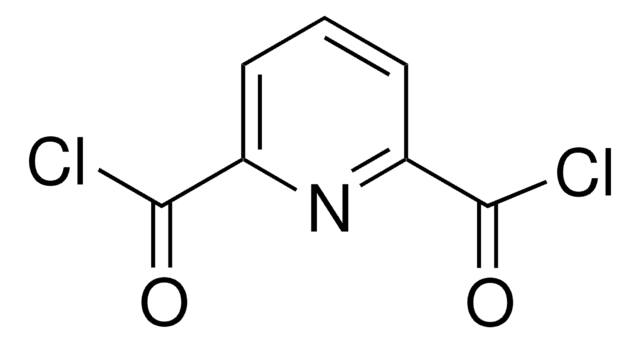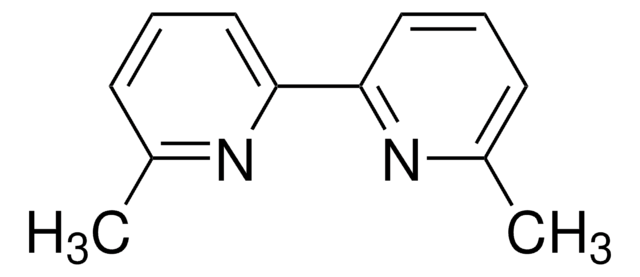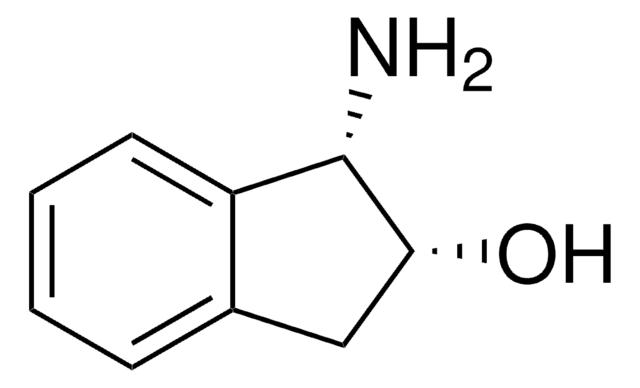Alle Fotos(3)
Wichtige Dokumente
464899
2,6-Pyridindicarbonitril
97%
Synonym(e):
2,6-Dicyanopyridine
Anmeldenzur Ansicht organisationsspezifischer und vertraglich vereinbarter Preise
Alle Fotos(3)
About This Item
Empirische Formel (Hill-System):
C7H3N3
CAS-Nummer:
Molekulargewicht:
129.12
EG-Nummer:
MDL-Nummer:
UNSPSC-Code:
12352100
PubChem Substanz-ID:
NACRES:
NA.22
Empfohlene Produkte
Assay
97%
Form
solid
mp (Schmelzpunkt)
123-127 °C (lit.)
Funktionelle Gruppe
nitrile
SMILES String
N#Cc1cccc(n1)C#N
InChI
1S/C7H3N3/c8-4-6-2-1-3-7(5-9)10-6/h1-3H
InChIKey
XNPMXMIWHVZGMJ-UHFFFAOYSA-N
Allgemeine Beschreibung
2,6-Pyridinedicarbonitrile is a heterocyclic dinitrile. Its biotransformation by Rhodococcus erythropolis A4 to 6-cyanopyridine-2-carboxamide has been reported.
Anwendung
2,6-Pyridinedicarbonitrile may be used to synthesize bis-tetrazoles and pyridine-based tridentate ligand 2,6-bis(α-aminoisopropyl)pyridine.
Signalwort
Warning
Gefahreneinstufungen
Acute Tox. 4 Dermal - Acute Tox. 4 Inhalation - Acute Tox. 4 Oral - Eye Irrit. 2 - Skin Irrit. 2 - STOT SE 3
Zielorgane
Respiratory system
Lagerklassenschlüssel
11 - Combustible Solids
WGK
WGK 3
Flammpunkt (°F)
Not applicable
Flammpunkt (°C)
Not applicable
Persönliche Schutzausrüstung
dust mask type N95 (US), Eyeshields, Gloves
Hier finden Sie alle aktuellen Versionen:
Besitzen Sie dieses Produkt bereits?
In der Dokumentenbibliothek finden Sie die Dokumentation zu den Produkten, die Sie kürzlich erworben haben.
Kunden haben sich ebenfalls angesehen
Synthesis and exploratory coordination chemistry of the new ditertiary carbinamine ligand 2, 6-bis (a-aminoisopropyl) pyridine.
Dahlenburg L, et al.
Inorgorganica Chimica Acta, 360(5), 1474-1481 (2007)
Vojtech Vejvoda et al.
Biotechnology letters, 29(7), 1119-1124 (2007-05-05)
2,6-Pyridinedicarbonitrile (1a) and 2,4-pyridinedicarbonitrile (2a) were hydrated by Rhodococcus erythropolis A4 to 6-cyanopyridine-2-carboxamide (1b; 83% yield) and 2-cyanopyridine-4-carboxamide (2b; 97% yield), respectively, after 10 min. After 118 h, the intermediates 1b or 2b were transformed into 2,6-pyridinedicarboxamide (1c; 35% yield)
Synthesis and characterisation of macrocycles containing both tetrazole and pyridine functionalities.
Fleming A, et al.
Tetrahedron, 67(18), 3260-3266 (2011)
Jonita Stankevičiūtė et al.
Scientific reports, 6, 39129-39129 (2016-12-17)
Pyridinols and pyridinamines are important intermediates with many applications in chemical industry. The pyridine derivatives are in great demand as synthons for pharmaceutical products. Moreover, pyridines are used either as biologically active substances or as building blocks for polymers with
Unser Team von Wissenschaftlern verfügt über Erfahrung in allen Forschungsbereichen einschließlich Life Science, Materialwissenschaften, chemischer Synthese, Chromatographie, Analytik und vielen mehr..
Setzen Sie sich mit dem technischen Dienst in Verbindung.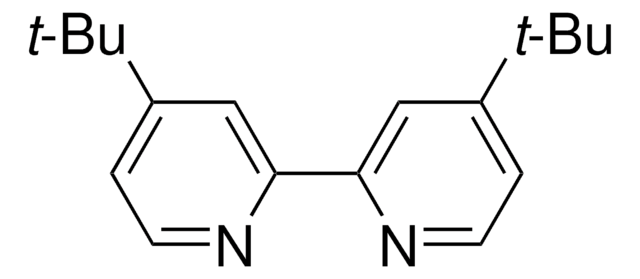


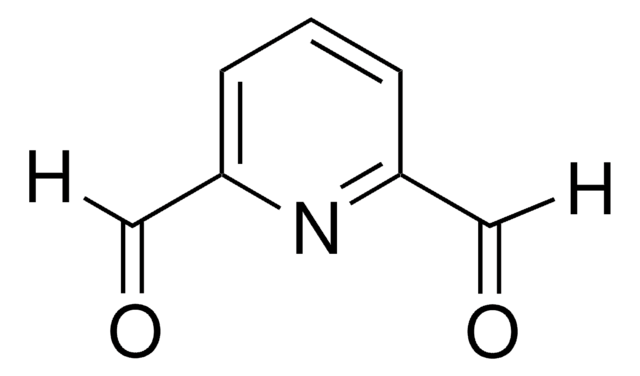


![1,8-Diazabicyclo[5.4.0]undec-7-en (1,5-5) 98%](/deepweb/assets/sigmaaldrich/product/structures/120/564/5b373e23-1624-489c-8efb-692de0f96ffb/640/5b373e23-1624-489c-8efb-692de0f96ffb.png)

